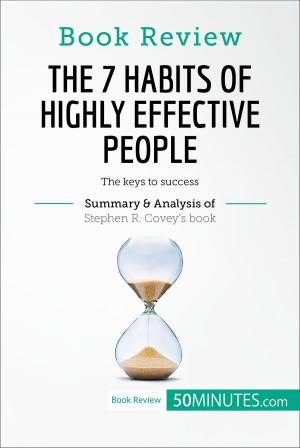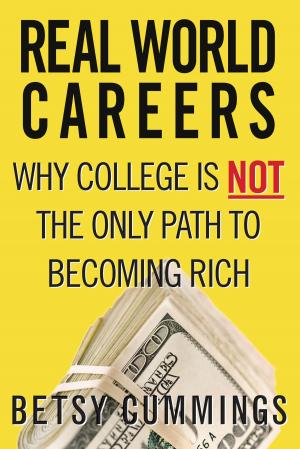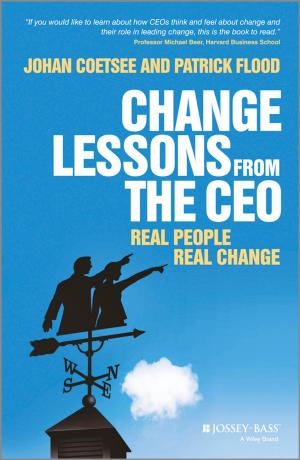Seven Rules For Designing More Innovative Conferences
Business & Finance, Business Reference, Business Communication, Human Resources & Personnel Management| Author: | Ed Bernacki | ISBN: | 9780973895469 |
| Publisher: | Ed Bernacki | Publication: | November 8, 2012 |
| Imprint: | Smashwords Edition | Language: | English |
| Author: | Ed Bernacki |
| ISBN: | 9780973895469 |
| Publisher: | Ed Bernacki |
| Publication: | November 8, 2012 |
| Imprint: | Smashwords Edition |
| Language: | English |
Seven Rules for Designing More Innovative Conferences is a tool kit of ideas, examples and case studies to help you design more innovative and effective conferences.
Each of the seven 'rules' explores a crucial element of conference design. It will help you make decisions such as: is a keynote speaker better than a brainstorming session that generates hundreds of ideas? The answer depends on your learning objectives; and this is why a learning and collaboration strategy is important. This book is for association, public sector or corporate managers who want more value from their conferences. You should read this book before you think about speakers or entertainment. Start your planning by asking these questions:
1. Why do we need to bring people together?
2. What do our participants need to know to be more successful?
3. How can we engage them to find more ideas, and act on them?
Why Seven Rules?
The rules suggest a discipline. Disciplines are something most people dislike but need to get results. Every conference needs a plan to manage the logistics of bringing people and speakers together. It also needs a learning plan to guide decisions on speakers, workshops and ways to engage participants effectively. The rules explore these areas:
Rule 1 The experts at your conference are in the audience, not on the stage.
Rule 2 Think Return on Investment…even though it is hard to measure.
Rule 3 Design your conference with Logistics and Learning.
Rule 4 Learning drives all objectives and design of your content.
Rule 5 Always use the brainpower of an audience to create something.
Rule 6 Put structure into your networking and mingling opportunities.
Rule 7 Assume that your conference participants have weak skills for participating in a conference.
What is an innovative conference?
Everyone wants to think of their events as innovative, but what does this mean? It is not about technology. An innovative conference is designed to:
1. Help people find more and bigger ideas at your conference.
2. Prompt people to act on their ideas after the conference.
3. Raise the profile of your organization in the process.
For an event to be innovative, people must engage in a way that leads to their bottom line results. Something has to be created, learned or changed. It starts with people acting on their ideas as a goal for all conferences. For example:
For sales conferences: use new ideas to sell more or to sell in new ways.
For staff conferences: use new ideas to work together more effectively or use new skills or personal insights that have value to the individual.
For leadership conferences: use new ideas to have organizational leaders act with a stronger sense and conviction in core values.
For management conferences: use new ideas to gain a stronger understanding of the organization or its values that leads to greater staff commitment.
For association conferences: use new ideas to be successful in the coming year and serve members more effectively.
This book provides a road map to prompt (and sometime provoke) new thinking in the design of conferences and it's long overdue.
Seven Rules for Designing More Innovative Conferences is a tool kit of ideas, examples and case studies to help you design more innovative and effective conferences.
Each of the seven 'rules' explores a crucial element of conference design. It will help you make decisions such as: is a keynote speaker better than a brainstorming session that generates hundreds of ideas? The answer depends on your learning objectives; and this is why a learning and collaboration strategy is important. This book is for association, public sector or corporate managers who want more value from their conferences. You should read this book before you think about speakers or entertainment. Start your planning by asking these questions:
1. Why do we need to bring people together?
2. What do our participants need to know to be more successful?
3. How can we engage them to find more ideas, and act on them?
Why Seven Rules?
The rules suggest a discipline. Disciplines are something most people dislike but need to get results. Every conference needs a plan to manage the logistics of bringing people and speakers together. It also needs a learning plan to guide decisions on speakers, workshops and ways to engage participants effectively. The rules explore these areas:
Rule 1 The experts at your conference are in the audience, not on the stage.
Rule 2 Think Return on Investment…even though it is hard to measure.
Rule 3 Design your conference with Logistics and Learning.
Rule 4 Learning drives all objectives and design of your content.
Rule 5 Always use the brainpower of an audience to create something.
Rule 6 Put structure into your networking and mingling opportunities.
Rule 7 Assume that your conference participants have weak skills for participating in a conference.
What is an innovative conference?
Everyone wants to think of their events as innovative, but what does this mean? It is not about technology. An innovative conference is designed to:
1. Help people find more and bigger ideas at your conference.
2. Prompt people to act on their ideas after the conference.
3. Raise the profile of your organization in the process.
For an event to be innovative, people must engage in a way that leads to their bottom line results. Something has to be created, learned or changed. It starts with people acting on their ideas as a goal for all conferences. For example:
For sales conferences: use new ideas to sell more or to sell in new ways.
For staff conferences: use new ideas to work together more effectively or use new skills or personal insights that have value to the individual.
For leadership conferences: use new ideas to have organizational leaders act with a stronger sense and conviction in core values.
For management conferences: use new ideas to gain a stronger understanding of the organization or its values that leads to greater staff commitment.
For association conferences: use new ideas to be successful in the coming year and serve members more effectively.
This book provides a road map to prompt (and sometime provoke) new thinking in the design of conferences and it's long overdue.















